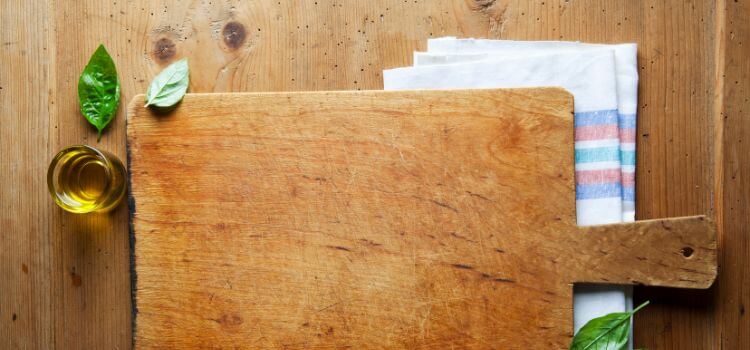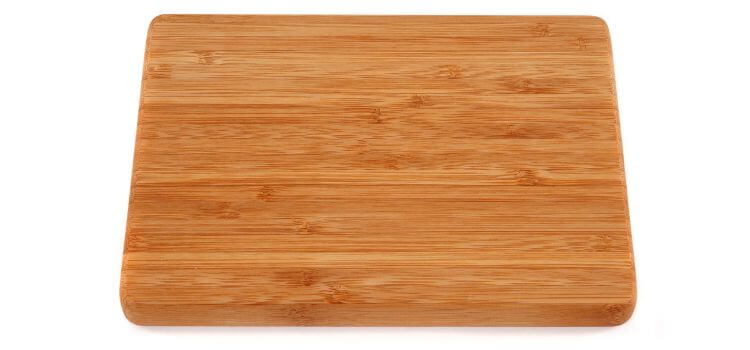As an Amazon Associate, I earn from qualifying purchases

In the realm of kitchen tools, a cutting board is indispensable. Whether you’re slicing vegetables or preparing a hearty roast, a reliable cutting board is essential. However, when it comes to wood cutting boards, sealing them properly is crucial to ensure their longevity and maintain hygiene.
Sealing prevents moisture absorption, reduces bacterial growth, and enhances the board’s durability. In this guide, we’ll explore the steps and considerations involved in sealing wood cutting boards, helping you preserve these valuable kitchen companions for years to come.
Choosing the Right Sealing Products
Selecting the appropriate sealing product is the first step toward protecting your wood cutting board. The market offers a variety of options, each with its own advantages. The primary consideration should always be safety, as your cutting board comes into direct contact with food. Food-safe oils and sealants are the best choices.
Mineral oil is a popular option due to its non-toxic nature and affordability. It’s easy to apply, penetrates the wood deeply, and creates a moisture barrier. Beeswax, often mixed with mineral oil, adds an extra layer of protection and gives a pleasant finish. For those seeking commercial options, there are many pre-made cutting board conditioners available that incorporate these ingredients.
DIY enthusiasts might explore homemade blends using natural oils like coconut oil or walnut oil. However, it’s important to ensure that any oil used is food-safe and non-rancid. Avoid vegetable oils, as they can turn rancid over time.
Step-by-Step Sealing Process
Sealing your wood cutting board is a straightforward process that can be accomplished in a few simple steps:
- Preparation: Begin by thoroughly cleaning and drying your cutting board. Use warm water and a little mild dish soap to remove any residues. Rinse well and allow it to dry completely, as any moisture can hinder the sealing process.
- Application: Once the board is dry, apply your chosen sealant. If using mineral oil, pour a small amount directly onto the board. Use a soft, clean cloth to spread the oil evenly over the entire surface, including the sides and edges. Apply in the direction of the wood grain to ensure even coverage.
- Drying: After application, it’s crucial to let the oil soak in. Allow the board to sit for several hours or overnight, depending on the wood’s absorption rate. Wipe off any excess oil with a dry cloth. For beeswax, gently heat the wax and apply it with a cloth, letting it solidify before buffing the surface.
Tips for Maintaining the Seal

To keep your cutting board in prime condition, regular maintenance is key:
- Cleaning: Clean your board after each use with mild soap and warm water, then dry immediately. Avoid soaking or using harsh chemicals, which can strip the sealant.
- Touch-Ups: Between full sealing sessions, you can touch up the board by applying a light coat of oil to areas that appear dry or worn. This helps maintain the moisture barrier without the need for a complete re-seal.
Common Mistakes to Avoid
Steering clear of common pitfalls can save you time and frustration:
- Over-Oiling: While it might be tempting to apply a generous amount of oil, over-oiling can cause the board to become sticky or attract dust. Apply just enough to coat the surface without pooling.
- Under-Oiling: Conversely, insufficient oiling leaves the board vulnerable to moisture and bacteria. Ensure you apply enough oil to penetrate the wood and create an effective barrier.
- Using Non-Food-Safe Products: It’s important to avoid using oils and sealants that are not food-safe. Some products might seem effective but can pose health risks.
How Often to Reseal
The frequency of resealing depends on several factors, including the type of wood, the board’s usage, and environmental conditions:
- Frequency: A general guideline is to reseal once a month, but heavily used boards might need more frequent attention. Conversely, if your board is used less often, resealing every three months might suffice.
- Signs to Reseal: Look for signs such as a dull appearance, dryness, or if water no longer beads on the surface. These indicate that the board could benefit from another sealing session.
Conclusion
Sealing wood cutting boards is a practice that pays dividends in terms of hygiene, durability, and longevity. By choosing the right products and following a consistent sealing routine, you preserve the board’s natural beauty and functionality. Regular maintenance ensures that your cutting board remains a reliable kitchen companion, ready to assist with meal preparation while safeguarding your health.
Ultimately, investing time in sealing your wood cutting board not only extends its life but also enhances your cooking experience. It’s a small effort with substantial rewards, ensuring that your kitchen continues to be a place of creativity and joy. So, take the time to seal your cutting board properly, and enjoy the lasting benefits it brings to your culinary adventures.
FAQ
How do you finish raw wood for a cutting board?
To finish raw wood for a cutting board, sand the surface smoothly with fine-grit sandpaper. Clean off any dust, then apply food-safe mineral oil or a blend of mineral oil and beeswax. Allow it to soak in, then wipe off excess and let it dry for a smooth, protected finish.
How to make a wooden cutting board food safe?
To make a wooden cutting board food safe, apply a generous coat of food-grade mineral oil or a beeswax-based conditioner. These sealants prevent moisture absorption and bacterial growth. Ensure the oil is absorbed fully and reapply as necessary to maintain the board’s protective barrier and longevity.
Should I oil my wooden cutting board?
Yes, regularly oiling your wooden cutting board is essential. Use food-grade mineral oil to maintain its moisture resistance and prevent cracking. Apply oil monthly or as needed based on usage. This routine not only extends the board’s life but also keeps it hygienically safe for food preparation.
How to seal a cutting board after wood burning?
After wood burning a design onto your cutting board, clean off any residue. Apply a food-safe finish like mineral oil or a beeswax-based conditioner. This seals the wood, protecting both the design and the board itself, ensuring it’s safe and durable for kitchen use.
As an Amazon Associate, I earn from qualifying purchases